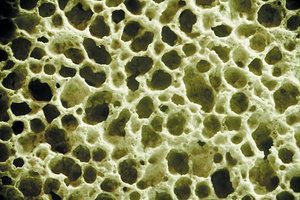Some doctors thrive in a personality-based clinic and have a loyal following no matter what services or equipment they offer, but for most chiropractic offices who are trying to grow and expand, new equipment purchases help us stay relevant and continue to service our client base in the best, most up-to-date manner possible. So, regarding equipment purchasing: should you lease, get a bank loan, or pay cash?
Repeating Bone-Density Tests
The U.S. Preventive Services Task Force recommends that women older than age 65 undergo bone-density testing. However, organizations in general have not stated when repeat bone-density testing should be done. It has been mostly left to the treating clinician to determine when it is appropriate to repeat the test.
In 2011, the task force stated: "Because of limitations in the precision of testing, a minimum of 2 years may be needed to reliably measure a change in BMD; however, longer intervals may be necessary to improve fracture risk prediction." Until recently, that was what clinicians had as a reference point. Without clearly defined parameters as to the testing interval, it is difficult to determine treatment protocols.

Last year, results of the long-running Study of Osteoporotic Fractures (SOF)1 finally resolved this issue. In the SOF, researchers followed 5,000 women ages 67 and older at entry for more than 15 years. The investigators defined the testing interval as the time before osteoporosis developed in 10 percent of participants. The qualitative results were not surprising: Women with better bone density at the beginning of the study were less likely to develop osteoporosis and related fractures. But the most valuable aspect of this study is the quantitative information it provides clinicians. We now can estimate when bone-density testing should be repeated.
These data demonstrate that for women with T scores of -1.00 or better (normal) and those with T scores of -1.01 to-1.49 (mild osteopenia), the intervals for repeat testing is essentially the same: 16.8 to 17 years, respectively. This is very significant: Women who have T scores of -1.00 to -1.49 don't need to repeat a bone-density test for another 10 to 15 years. My humble opinion is15 years, but the researches are saying 10 to 15 years.
An issue that was not discussed in the study, but I think is very important, is that the data also indicate there is no reason to put women with T scores of -1.49 and above on any medication to prevent osteoporosis.
| Recommended Intervals for Repeat Bone-Density Testing | |
| Initial T Score | Frequency of Repeat Testing |
| Normal to -1.49 | Every 10-15 years |
| -1.50 to -1.99 | Every 3-5 years |
| -2.00 to -2.29 | Annually |
The data was also similar if the endpoint was the development of vertebral or hip fractures, rather than development of osteoporosis. Unfortunately, the one risk factor that was not considered was level of physical activity.
It is clear that a "one-size-fits-all" strategy is not appropriate when determining the frequency of bone-density testing. This study provides clear parameters for the re-evaluation of BMD testing in women at risk for osteoporosis.
Reference
- Gourlay ML, et al. Bone-density testing interval and transition to osteoporosis in older women. N Engl J Med, 2012;366:225-233.



